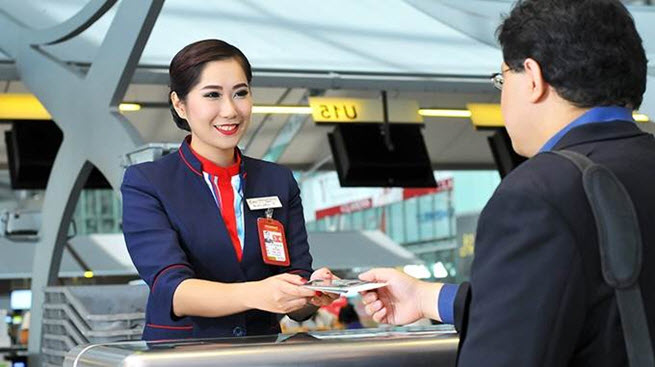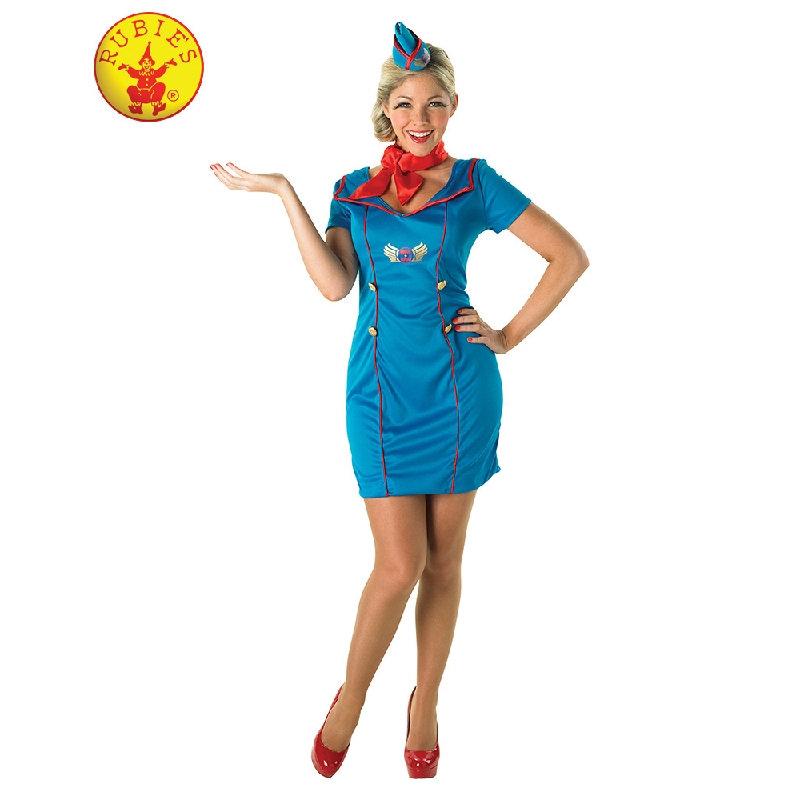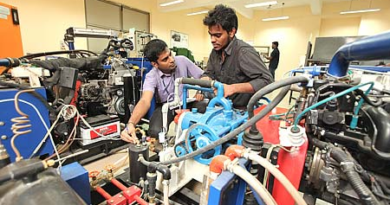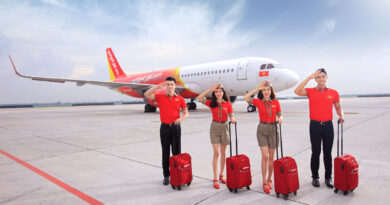Free Airport Safety Crew course (4months)
Airport Safety Crew:

Brief Job Description: To effectively monitor safety of airport operations and report the violations.
Personal Attributes: A safety crew attributes would include good communication skills , physical endurance and responsibility.

Safety and security procedures:
Performance Criteria
PC1. comply with the organisation’s safety and security policies and procedures
PC2. comply with the regulatory guidelines on safe conduct of operations and maintenance of conditions to thwart any acts of unlawful interference
PC3. report any identified breaches of safety, and security policies and procedures to the designated person
PC4. coordinate with other resources at the workplace (within and outside the organisation) to achieve safe and secure environment
PC5. identify and mitigate any safety and security hazards like illness, accidents, fires or acts of unlawful interference if it falls within the limits of individual’s authority
PC6. report any hazards outside the individual’s authority to the relevant person in line with organisational procedures and regulatory guidelines
PC7. follow organisation’s emergency procedures for accidents, fires or acts of unlawful interference
PC8. identify and recommend opportunities for improving health, safety, and security to the designated person
PC9. ensure all health and safety records are updated and procedures well defined.
Organizational

Context
KA1. hazard identification and risk management as defined within the organizational policy and procedures
KA2. legislative requirements and organisation’s procedures for maintenance of safety and security standards and individual’s role and responsibilities in relation to this
KA3. how and when to report hazards
KA4. the limits of responsibility for dealing with hazards
KA5. the organisation’s emergency procedures for different emergency situations and the importance of following these
KA6. the importance of maintaining high standards of safety and security
KA7. implications that any non-compliance with safety and security may have on individuals and the organisation
Technical Knowledge
KB1. different types of breaches of safety and security and how and when to report these
KB2. evacuation procedures for workers and passengers
KB3. how to summon medical assistance and the emergency services, where necessary
KB4. how to use the health, safety and accident reporting procedures and the importance of these
KB5. regulatory guidelines on dealing with safety and security emergencies
Core Skills/ Generic Skills

| Writing Skills |
| The user/ individual on the job needs to know and understand how to: SA1. complete accurate, well written report in English language detailing the situations of emergency with attention to detail |
| Reading Skills |
| The user/individual on the job needs to know and understand how to: SA2. read instructions, guidelines/procedures/rules |
| Oral Communication (Listening and Speaking skills) |
| The user/individual on the job needs to know and understand how to: SA3. listen to and orally communicate information with all concerned |
Professional Skills
| Decision Making |
| The user/individual on the job needs to know and understand how to: SB1. make decisions on a suitable course of action or response if permitted by the authority matrix. Plan and Organize The user/individual on the job needs to know and understand how to: SB2. monitor efficient functioning of all activities SB3. plan and organise work to achieve targets and deadlines Customer Centricity The user/individual on the job needs to know and understand how to: SB4. communicate with customers in a courteous manner SB5. maintain effective relationship with peers Problem Solving The user/individual on the job needs to know and understand how to: SB6. identify trends/common causes for errors and suggest possible solutions to the supervisor / management SB7. identify and correct errors Analytical Skills The user/individual on the job needs to know and understand how to: SB8. analyse best possible solutions (cost, time, effort, etc) suited for operations Critical Thinking Skills The user/individual on the job needs to know and understand how to: SB9. concentrate on task at hand and complete it without errors SB10. apply balanced judgments to different situations Monitor safety of airport operations Performance Criteria Monitoring Safety of Airport Operations PC.1 monitor the safe and secure operation of the airside environment in accordance with relevant regulations and company SOPs PC.2 report on safety and security issues at the airport in accordance with the Civil Aviation Safety Regulations and Airport Operator’s safety regulations PC.3 ensure serviceability inspections are conducted in accordance with the requirements of the Aerodrome Operations Manual including the movement areas, airfield lighting etc. PC.4 provide support regarding safety and security breaches and initiate appropriate actions PC.5 oversee the maintenance of all relevant SOP’s, manuals, plans, procedures and guidelines PC.6 monitor compliance with the Airside Vehicle Control handbook and Driver Licensing PC.7 monitor effective airport operations are maintained including aircraft incident reporting, aircraft parking control, issuing of NOTAMs, monitoring and reporting of airside safety, preparation of project MOWPs, monitor and update AIP information PC.8 actively participate in the Airport Emergency Response process PC.9 coordinate effective technical inspections and approach surveys (annually), tree trimming, friction testing and rubber removal PC.10 coordinate effective pavement inspections, maintenance procurement, works staging, and budgeting PC.11 monitor the Bird and Wildlife Management Plan, reporting and permits PC.12 keep the management informed of the effectiveness of bird control measures and recommend improvements where necessary to minimise the risk of bird strikes PC.13 respond to the day-to-day operational issues raised by various reporting teams PC.14 monitor airport tenants and stakeholder activities to ensure they are maintained within regulatory standards and assisting with direction as required PC.15 work closely with the Manager Operations and Standards and the Projects and Planning team, oversee relevant on-airport aviation/airside project activity PC.16 brief the Manager Operations and Standards and / or the Manager Security and Emergency Planning immediately regarding all significant safety & security matters PC.17 develop and maintain effective working relationships with key stakeholders PC.18 monitor compliance to relevant statutory regulations and airport policies and guidelines; PC.19 ensure hazards and incidents are identified and entered onto Airport Safety Management System (SMS); PC.20 ensure all relevant legislation, policies and procedures are adhered to PC.21 work with the Manager Operations and Standards and Manager Risk and Regulatory Compliance to develop and maintain the Risk Management System PC.22 provide quality internal and external customer service PC.23 comply with the environmental responsibilities outlined in the Airport Environment Policy and co-operate with and participate in all Company related programs to make the work environment healthier and safer Knowledge and Understanding Organizational Context KA1. hazard identification and risk management as defined within the organizational policy and procedures KA2. legislative requirements and organisation’s procedures for maintenance of safety and security standards and individual’s role and responsibilities in relation to this KA3. how and when to report hazards KA4. the limits of responsibility for dealing with hazards KA5. the organisation’s emergency procedures for different emergency situations and the importance of following these KA6. the importance of maintaining high standards of safety and security KA7. implications that any non-compliance with safety and security may have on individuals and the organisation Technical Knowledge KB1. different types of breaches of safety and security and how and when to report these KB2. evacuation procedures for workers and passengers KB3. how to summon medical assistance and the emergency services, where necessary KB4. how to use the health, safety and accident reporting procedures and the importance of these KB5. regulatory guidelines on dealing with safety and security emergencies Core Skills/ Generic Skills Writing Skills The user/ individual on the job needs to know and understand how to: SA1. complete accurate, well written report in English language detailing the situations of emergency with attention to detail Reading Skills The user/individual on the job needs to know and understand how to: SA2. read instructions, guidelines/procedures/rules Oral Communication (Listening and Speaking skills) The user/individual on the job needs to know and understand how to: SA3. listen to and orally communicate information with all concerned Professional Skills Decision Making The user/individual on the job needs to know and understand how to: SB1. make decisions on a suitable course of action or response if permitted by the authority matrix Plan and Organize The user/individual on the job needs to know and understand how to: SB2. monitor efficient functioning of all activities SB3. plan and organise work to achieve targets and deadlines Customer Centricity The user/individual on the job needs to know and understand how to: SB4. communicate with customers in a courteous manner SB5. maintain effective relationship with the customers Problem Solving The user/individual on the job needs to know and understand how to: SB6. identify trends/common causes for errors and suggest possible solutions to the supervisor / management SB7. identify and correct errors Analytical Skills The user/individual on the job needs to know and understand how to: SB8. analyse best possible solutions (cost, time, effort, etc) suited for operations Critical Thinking Skills The user/individual on the job needs to know and understand how to: SB9. concentra te on task at hand and complete it without errors SB10. apply balanced judgme nts to different situations  Work Effectively in a Team Performance Criteria Support the work team PC1. display courteous and helpful behaviour at all times. PC2. take opportunities to enhance the level of assistance offered to colleagues. PC3. meet all reasonable requests for assistance within acceptable workplace timeframes. PC4. complete allocated tasks as required. PC5. seek assistance when difficulties arise. PC6. use questioning techniques to clarify instructions or responsibilities. PC7. identify and display a non discriminatory attitude in all contacts with customers and other staff members. Maintain personal presentation PC8. observe appropriate dress code and presentation as required by the workplace, job role and level of customer contact. PC9. follow personal hygiene procedures according to organisational policy and relevant legislation. Develop effective work habits PC10. interpret, confirm and act on workplace information, instructions and procedures relevant to the particular task. PC11. interpret, confirm and act on legal requirements in regard to anti- discrimination, sexual harassment and bullying. PC12. ask questions to seek and clarify workplace information. PC13. plan and organise daily work routine within the scope of the job role. PC14. prioritise and complete tasks according to required timeframes. PC15. identify work and personal priorities and achieve a balance between competing priorities. Knowledge and Understanding Organisational Context KA1. the policies and procedures relating to the job role. KA2. the value system of the organisation. KA3. employee rights and obligations. KA4. the reporting hierarchy and escalation matrix. Technical Knowledge KB1. ask questions to identify and confirm requirements. KB2. follow routine instructions through clear and direct communication. KB3. use language and concepts appropriate to cultural differences. KB4. use and interpret non-verbal communication. KB5. the scope of information or materials required within the parameters of the job role. KB6. consequences of poor team participation on job outcomes. KB7. work health and safety requirements. Core Skills/ Generic Skills Writing Skills, On the job the individual needs to be able to: SA1. complete documentation accurately. SA2. write simple reports when required. Reading Skills On the job the individual needs to be able to: SA3. read information accurately. SA4. read and interpret data sheets. Oral Communication (Listening and Speaking skills) The user/individual on the job needs to know and understand how to: SA5. listen to and orally communicate information with all concerned  Professional Skills Decision Making On the job the individual needs to be able to: SB1. make appropriate decisions regarding the responsibilities of the job role. Plan and Organise The user/individual on the job needs to know and understand how to: SB2. monitor efficient functioning of all activities SB3. plan and organise work to achieve targets and deadlines Customer Centricity The user/individual on the job needs to know and understand how to: SB4. communicate with passengers and other stakeholders in a courteous manner SB5. maintain effective work relationship Problem Solving The user/individual on the job needs to know and understand how to: SB6. identify trends/common causes for errors and suggest possible solutions to the supervisor / management SB7. identify and correct errors Analytical Thinking The user/individual on the job needs to know and understand how to: SB8. analyse best possible solutions (cost, time, effort, etc.) suited for operations Critical Thinking The user/individual on the job needs to know and understand how to: SB9. concentrate on task at hand and complete it without errors SB10. apply balanced judgments to different situations. 
 Free Airport Fire Prevention Crew course (6months) Free Airport Fire Prevention Crew course (6months)  |






